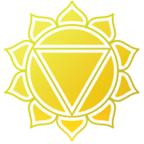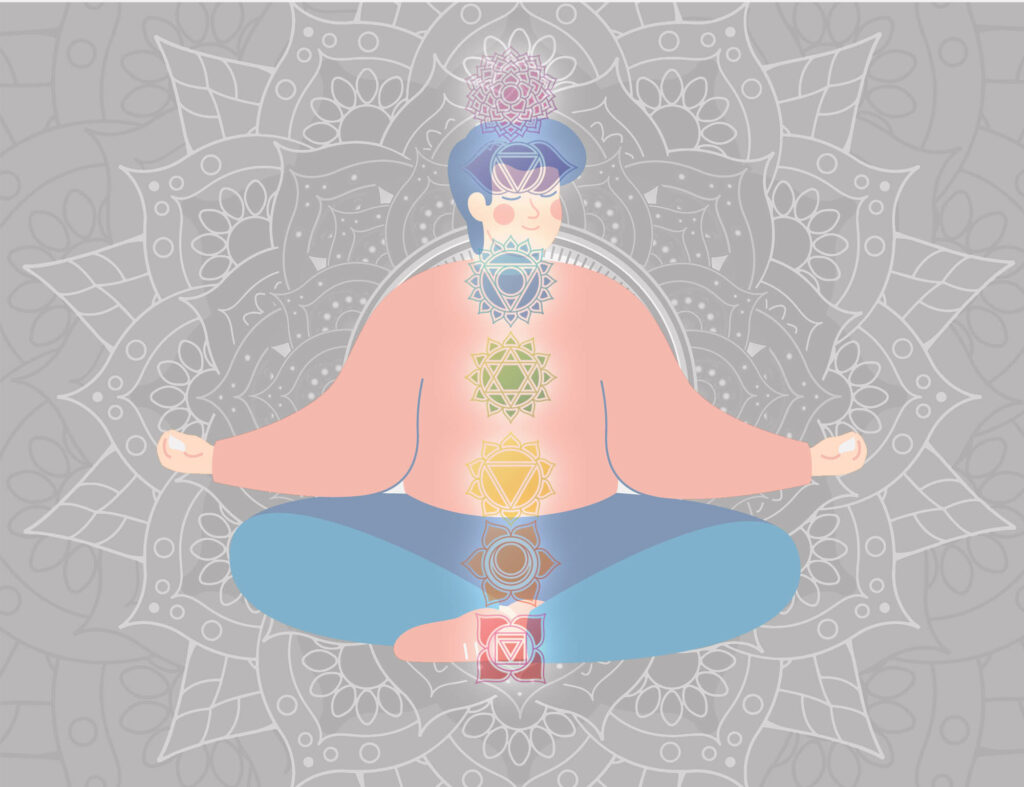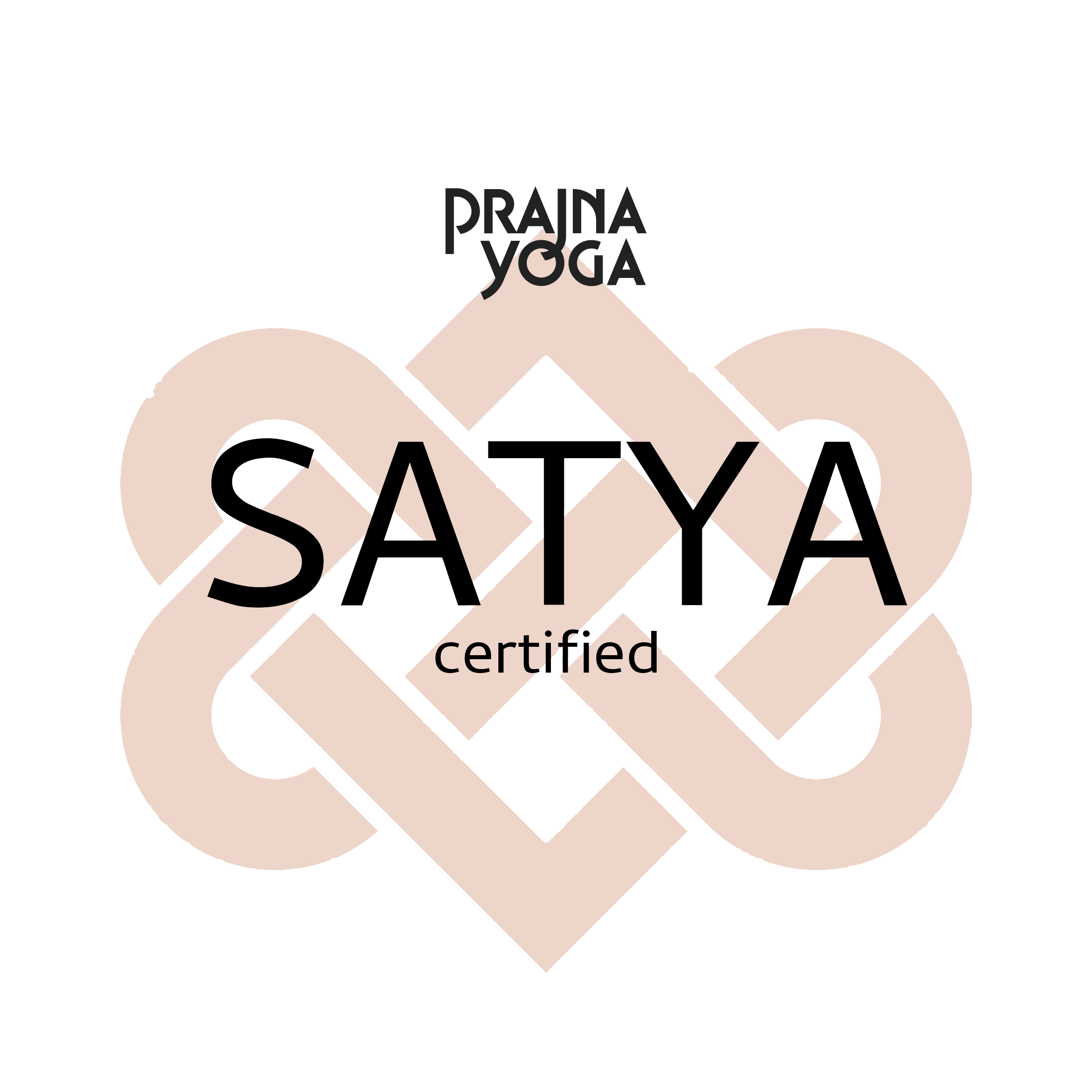Most of the time, I have a unifying thread of some sort to connect a series of 4-6 classes. Last month, we worked form a perspective of the Vayus. This month and into December, we are working with the chakra model.
Whether or not chakras exist from a scientific / anatomical perspective I’ll leave to you to ponder. For our purposes, though, the model of chakras provides a wonderful systematic structural way to work through our body, mind, and spirit.
Chakras are a set of seven energetic ‘wheels’ each with its own unique characteristics and function. Moving from the crown, Sahasrara, to our tailbone, Muladhara, the chakras lie in a vertical column oriented with our spine. The Sahasrara is where we connect to the boundless universe, our liberation and our connection. Moving from this subtle energy of consciousness at the crown, we travel down the spine to our root, Muladhara.
Since chakras are connected to anatomical regions, prana flow, mental facilities and emotional traits, they can be effected by Asana practice. asanas can open tissue & encourage circulation into specific areas of the body. They also encourage vibrant pranic flow through the nadis. In class, we will use both SATYA practice and asana to ‘tune up’ our chakras.

In our first week, we’ll begin with our foundation, the Muladhara, the root chakra located in the region of our pelvic floor. This chakra forms our base, our root, and our source of stability. Muladhara is associated:
- Earth element
- The elephant
- Sense of smell
- Apana vayu
- Color yellow
By building the physical strength in the Muladhara region, we also build stability in our mind and a firm foundation for meditation.
What this means for our classes this week is we will work on hip and pelvic strength and mobility. Poses that support hip muscles, pelvic floor, psoas, legs, knees and feet will be on the menu and we’ll hold our asanas for several breaths for strength and stability.

Since theses anatomical regions are connected in many ways, we’ll touch upon Svadhisthana chakra, too. This chakra is located in the sacral region and is tied to the large colon, bladder, and reproductive organs. Not necessarily glamorous, but all vital to healthy living.

Next up, we have a chakra that I love to work with via asana practice, the Manipura Chakra. Why do I love this one? Because I love twists, core work and backbends, all of which work the solar plexus region of our upper abdomen where the Manipura is located. Expect poses like revolved triangle, dhanurasana, boat pose, ardha matseyandrasana…
The two chakras below manipura, when balanced, create a sense of security and stability. Once those basic human needs are attended to, we begin to feel our own desire and ability to effect the world around us.
The manipura chakra is related to the element fire and is closely associated with out sense of self efficacy, that we can set goals and achieve them. An under-activated manipura can appear as low drive, throwing in the towel at the first obstacle, or a feeling of being overwhelmed. An over-activated manipura can lead to aggressive/overbearing behavior, always being ‘on’ and unable to relax, working so hard that you are left totally wiped out, etc…
A healthy and balanced manipura gives us a sense that we are free to choose our path; either to back off and let things go or to put some fuel into the fire and achieve our goals.

As we move up the ladder, we begin to enter more subtle territory; the Anahata Chakra, heart chakra, seat of love and compassion. Poses for Anahata are often referred to as heart openers, so picture back bends in our future.
The element for Anahata is air with its ability to expand beyond boundaries. Physical structures related to Anahata are the heart, lungs, and arms/hands.
Imbalances in our heart chakra can result in feelings of loneliness, not belonging and isolation. Also, we may feel deeply connected to people or things in an unhealthy way that leaves us unduly hurt or unable to forgive when we feel wronged.
A balanced Anahata shows up as:
- able to both give and receive love
- self-care, knowing we are worthy of taking care of ourselves
- a sense of belonging
One of my favorite Ram Dass quotes fits nicely here:
“You are loved just for being who you are, just for existing. You don’t have to do anything to earn it. Your shortcomings, your lack of self-esteem, physical perfection, or social and economic success—none of that matters. No one can take this love away from you, and it will always be here.”
Ram Dass

Higher and higher we go!



